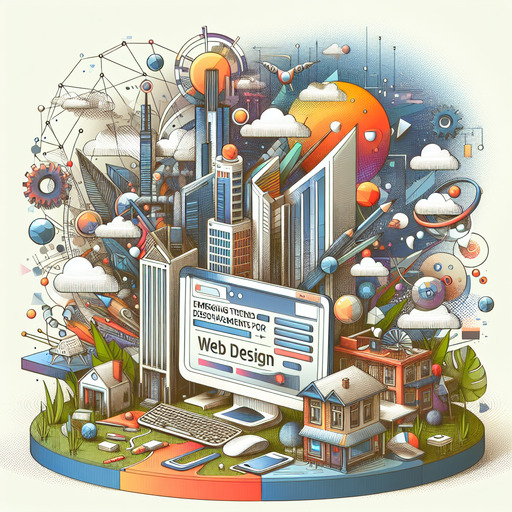
-
Table of Contents
Introduction
As we approach 2024, web design continues to evolve rapidly, driven by technological advancements and changing user needs. This year introduces trends that redefine website design and user experience. From AI integration to immersive experiences via augmented and virtual reality, web designers are breaking new ground in both creativity and functionality. There’s also a stronger focus on accessibility, sustainability, and user-centric design, ensuring websites are not only visually appealing but also inclusive and eco-friendly. Let’s dive into the key web design trends for 2024 and see how they create engaging, meaningful digital experiences beyond just aesthetics.
Top Web Design Trends to Watch in 2024: Elevate Your Website Development
In 2024, keeping up with web design trends is essential for small businesses and e-commerce platforms to stand out in an increasingly competitive digital space. Custom, responsive, and user-friendly designs lead these trends, ensuring that websites not only attract visitors but also convert them into loyal customers.
Custom Designs
Businesses are moving away from generic templates, opting for unique, custom designs that reflect their brand identity. In an overcrowded market, custom design has become vital for companies to differentiate themselves. Tools like Figma, Sketch, and Adobe XD make it easier than ever to create bespoke websites. These platforms allow designers to innovate and streamline the creative process, resulting in one-of-a-kind digital experiences.
Responsive Design
Responsive design remains a top priority in 2024, especially with the growing number of users accessing websites on mobile devices. Ensuring websites function flawlessly and look great on all screen sizes is non-negotiable. Techniques like flexible grids and media queries are essential to delivering seamless experiences across devices. For e-commerce platforms, where a large portion of traffic comes from mobile users, responsiveness is crucial not only for user satisfaction but also for SEO success, as Google prioritizes mobile-friendly sites.
User-Friendly Interfaces
Web users expect intuitive, easy-to-navigate interfaces. As a result, user-friendliness is more important than ever. Simplified navigation, clear call-to-action buttons, and clean, minimalistic layouts are becoming standard. Micro-interactions—small animations that guide users and enhance their experience—are also gaining popularity as a way to improve engagement and usability.
Advanced Technologies: AI and Machine Learning
AI and machine learning are transforming web design by enabling more personalized, interactive experiences. AI-powered chatbots provide instant customer support, while machine learning algorithms analyze user behavior to offer personalized content and recommendations. These technologies not only improve engagement but also provide valuable insights to enhance future designs.
Accessibility and Inclusivity
Accessibility is now a non-negotiable part of modern web design. Designers are embracing best practices, such as providing alt text for images, enabling keyboard navigation, and ensuring sufficient color contrast. Accessible websites not only help businesses reach a broader audience but also demonstrate social responsibility, creating a more inclusive digital environment.
In conclusion, the web design trends of 2024 emphasize custom, responsive, and user-friendly designs tailored to modern users’ needs. By staying ahead of these trends and leveraging cutting-edge tools, small businesses and e-commerce platforms can remain competitive, deliver engaging digital experiences, and achieve long-term success.
Q&A
- What are some web design trends to watch in 2024?
- Dark Mode: Popular for its sleek look and energy-saving advantages.
- 3D Elements: Using interactive 3D graphics and animations for enhanced user engagement.
- Minimalism: Simple, clean designs that focus on user experience and fast loading speeds.
- Micro-Interactions: Small animations that provide feedback and improve user interaction.
- Voice User Interface (VUI): Integrating voice commands for hands-free navigation.
- Neumorphism: A blend of skeuomorphism and flat design, offering a soft, 3D-like aesthetic.
- Sustainability: Designing websites with energy efficiency and eco-friendly practices in mind.
- AI and Machine Learning: Personalized user experiences driven by AI-powered content recommendations.
- Augmented Reality (AR): Incorporating AR for product previews and immersive content.
- Inclusive Design: Ensuring accessibility for users with disabilities, following best practices for inclusivity.
For further reading on web design trends and best practices, check out this comprehensive guide to web design trends in 2024.